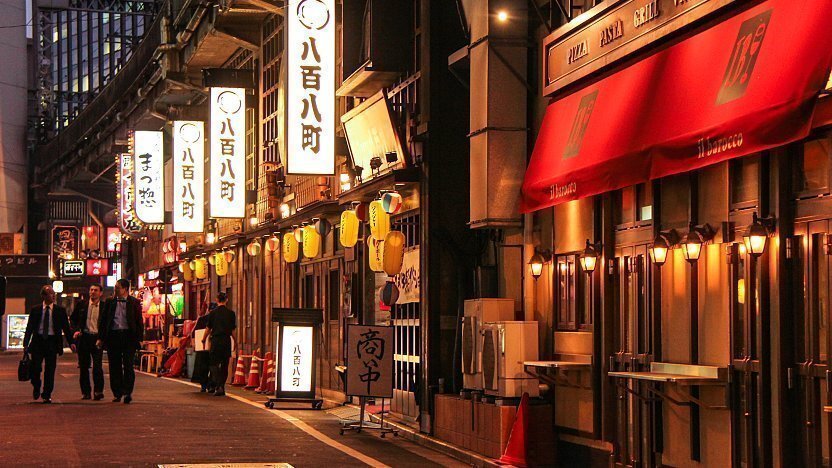A new kid on the block, this ramen restaurant joined the ranks of being the few ramen restaurants to be awarded a Michelin star in 2019. They specialize in shio ramen, but also have a signature shoyu ramen as well. The shio ramen is a salt based ramen using two salts (Mongolian rock salt and Okinawan sea salt), red sea bream and hamaguri clams for their soup base. With this delicious soup base, they use truffle oil, mushroom sauce, bacon bits and inca berry sauce. The noodles are also handmade. For any ramen lovers, this ramen restaurant is a must.
*When talking about ramen, soba can be interchangeable with ramen. It does not mean it is actual soba (the buckwheat flower kind) but rather referring to chuka soba which is Chinese noodles.
Our review
On a quiet Monday afternoon, I went to check out Sobahouse Konjikihtototogisu in Shinjuku. This is a restaurant that I had been wanting to visit for a long time and I was not disappointed.
With wait times often topping two hours, and opening hours restricted to Mondays to Fridays I hadn’t managed to find time until….. Covid!
From arriving to getting my food I waited about 40 minutes. There were 7 people in front of me in the queue. 3 outside and 4 inside. The restaurant seats 10 people. 6 seats at the counter plus two small tables that can accommodate 2 people each. There was a nice atmosphere with soft jazz music playing. It was very quiet in the restaurant nobody was talking everybody was focused on their food.
I ordered the ‘recommended bowl’ Shio Soba at 950 yen. Bargain for a one Michelin star meal! Details of the ingredients in the picture. In addition to the ingredients mentioned I also discovered chopped basil in my dish (the green in the photo) and what I think was sun-dried tomato. Pork sweet and tender The soup had quite as strong but delicate fishy flavor. I could taste the truffle oil. It was full-flavored but not overpowering.
Overall I would say it was a light dish with an interesting fusion and balance of flavors.
I can definitely understand why it's received so many awards. Compared to other ramen I've eaten this was a very cleverly balanced bowl.
-Laura. founder of Hello! Tours




















